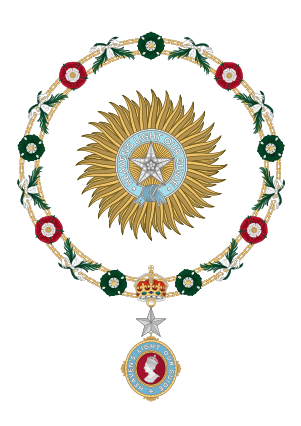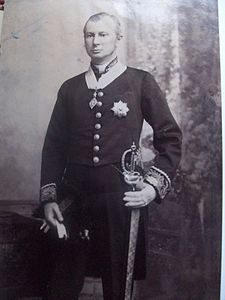
The Most Eminent Order of the Indian Empire is an order of chivalry founded by Queen Victoria on 1 January 1878. The Order includes members of three classes:
- Knight Grand Commander (GCIE)
- Knight Commander (KCIE)
- Companion (CIE)

General Nawab Sir Sadiq Muhammad Khan V Abbasi was the 12th and final Nawab (ruler) of the state of Bahawalpur from February 1907 to October 1955, and then as a titular figure until his death in 1966.

Maharaja Raol Sir Takhtsinhji JaswantsinhjiKIH, was Maharaja of Bhavnagar, a Rajput chief of the Gohil clan, and ruler of Bhavnagar state in Kathiawar. He succeeded to the throne of Bhavnagar upon the death of his father, Jaswantsinhji, in 1870.
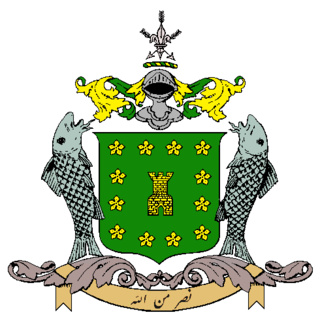
The Nawabs of Bhopal were the Muslim rulers of Bhopal, now part of Madhya Pradesh, India. The nawabs first ruled under the Mughal Empire from 1707 to 1737, under the Maratha Empire from 1737 to 1818, then under British rule from 1818 to 1947, and independently thereafter until it was acceded to the Union of India in 1949. The female nawabs of Bhopal held the title Nawab Begum of Bhopal.

Maharaja Sir Bhupinder Singh, was an Indian royal and cricket player. He was the ruling Maharaja of the princely state of Patiala in British India from 1900 to 1938. He was born in a Sidhu royal Jat Sikh family.

Maharajah Sir Jagatjit Singh Sahib Bahadur was the last ruling Maharaja of the princely state of Kapurthala during the British Raj in India, from 1877 until his death, in 1949. He ascended to the throne of Kapurthala state on 16 October 1877 and assumed full ruling powers on 24 November 1890 as well indulging in traveling the world and being a Francophile. He was born in an Ahluwalia Sikh family. He received the title of Maharaja in 1911. He built palaces and gardens in the city of Kapurthala; his main palace, Jagatjit Palace there was modelled on the Palace of Versailles. He also built a gurdwara at Sultanpur Lodhi.
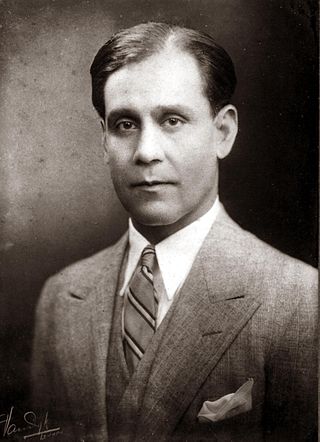
Hamidullah Khan was the last ruling Nawab of the princely salute state of Bhopal. He ruled from 1926 when his mother, Begum Kaikhusrau Jahan Begum, abdicated in his favor, until 1949 and held the honorific title until his death in 1960. A delegate to the Round Table Conference in London, he served as Chancellor of the Chamber of Princes from 1944 to 1947, when India became independent.

Maharaja Sir Madho Rao Scindia of Gwalior, was the 5th Maharaja of Gwalior belonging to the Scindian dynasty of the Marathas.
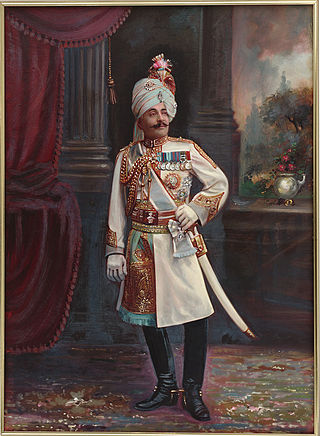
Lieutenant-General Sir Pratap Singh,, was a decorated British Indian Army officer, Maharaja of the princely state of Idar (Gujarat), administrator and Regent of Jodhpur and heir to Ahmednagar later renamed as Himmatnagar from 1902 to 1911.
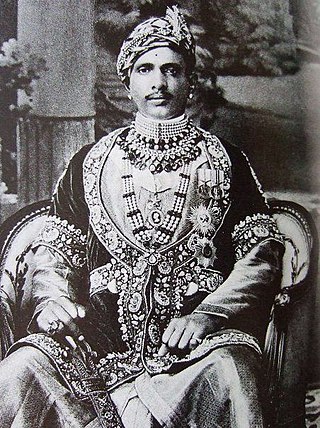
Hon Colonel. HH Raj Rajeshwar Bharat Dharma Prabhakar Maharaja Shri Sawai Sir Jai Singhji Veerendra Shiromani Dev Bahadur, was the Naruka Kachwaha Rajput ruler of the Princely State of Alwar from the year 1892 to 1937. The only son of the previous ruler, Sir Mangal Singh Prabhakar Bahadur, Sir Jai Singh initially was noted as brilliant, erudite and charming. However, he was later forced into exile. He died in 1937 at the age of 54. He was succeeded by a distant relative, Tej Singh Prabhakar Bahadur.

HH Maharajadhiraj Shri Maharaja Mahim Mahendra Maharao Raja Sir Umaid Singh II was the 18th Hada Chauhan ruler of the Princely State of Kotah from the year 1889 to 1940.

Prabhu Narayan Singh was ruler of the Benares State, an Indian princely state, from 1889 to 1931. Prabhu Narayan Singh would reign for 42 years as Maharaja; in 1891, he was knighted with the KCIE, later becoming an honorary colonel in the Indian Army.
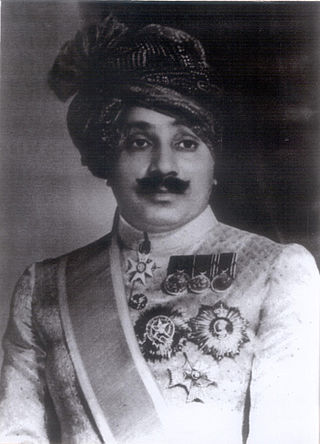
Lieutenant-General HH Shri Raj Rajeshwar Saramad-e-Raja-e-Hindustan Maharajadhiraja Maharaja Sir Umaid Singh Bahadur, Assoc KStJ, also spelled Umed Singh, was the Maharaja of Jodhpur State of the historic Rathore dynasty of Marwar from the year 1918 to 1947 until his death.
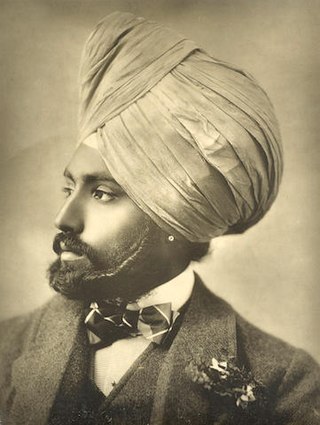
Maharajah Sir Ranbir Singh was the Maharaja of Jind. He ruled Jind from 1887 to 1948- one of the longest terms as the ruler.

Sultan Jahan was the ruling Begum of Bhopal between 1901 and 1926.

The following list includes a brief about the titles of nobility or orders of chivalry used by the Marathas of India and by the Marathis/Konkanis in general.
The 1903 New Year Honours, announced at the time as the Durbar Honours, were appointments to various orders and honours of the United Kingdom and British India. The list was announced on the day of the 1903 Delhi Durbar held to celebrate the succession of King Edward VII and Queen Alexandra as Emperor and Empress of India. The membership of the two Indian Orders were expanded to allow for all the new appointments.
The 1911 Delhi Durbar was held in December 1911 following the coronation in London in June of that year of King George V and Queen Mary. The King and Queen travelled to Delhi for the Durbar. For the occasion, the statutory limits of the membership of the Order of the Star of India and the Order of the Indian Empire were increased and many appointments were made to these and other orders. These honours were published in a supplement to the London Gazette dated 8 December 1911.
